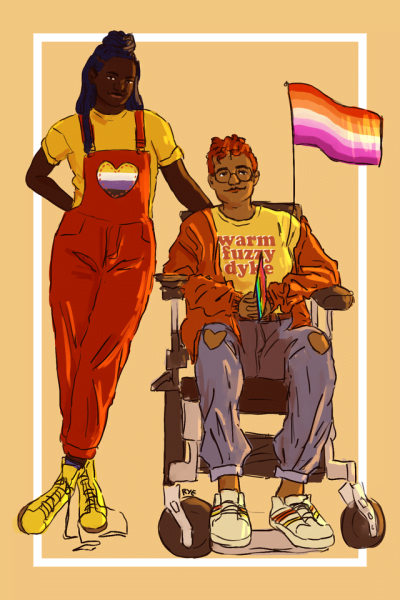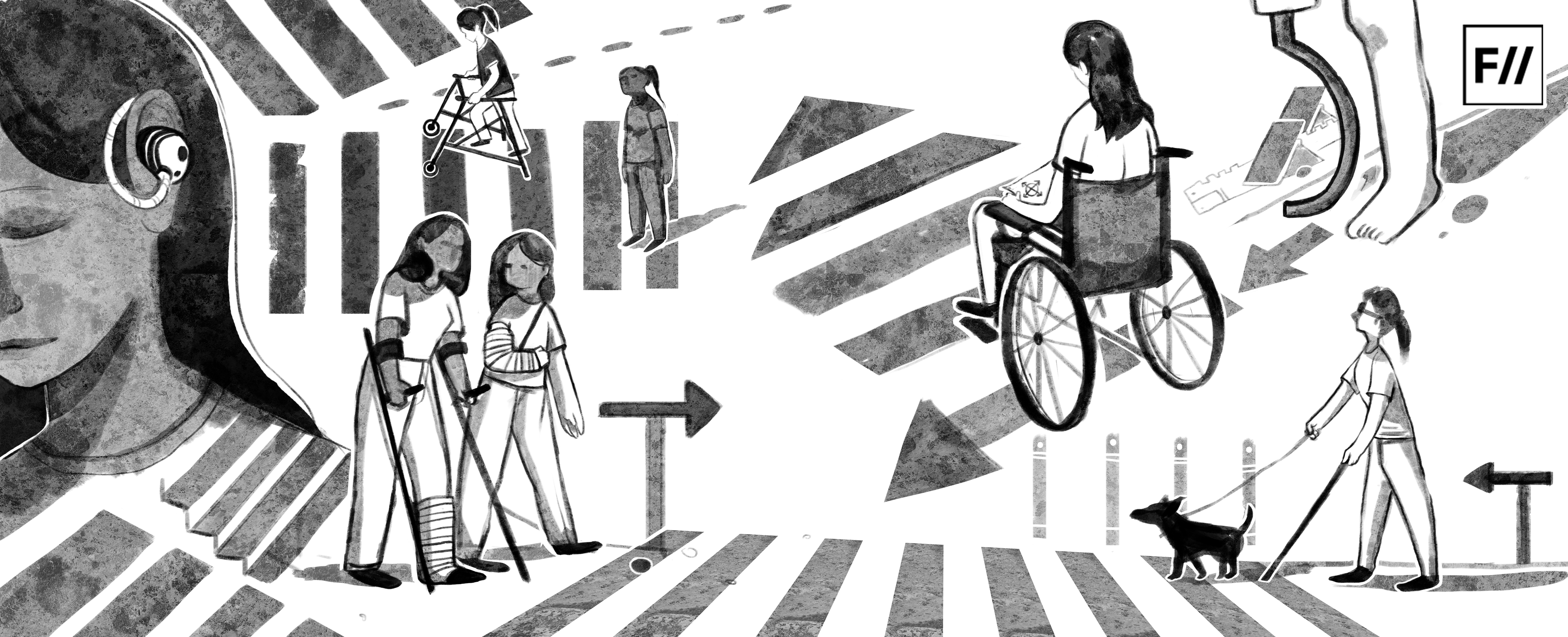Editor’s Note: This month, that is July 2020, FII’s #MoodOfTheMonth is Feminism And Body Image, where we invite various articles about the diverse range of experiences which we often confront, with respect to our bodies in private or public spaces, or both.. If you’d like to share your article, email us at pragya@feminisminindia.com.
India has a peculiar social set up where groupism covertly operates under the larger meta-narrative of neoliberalism. Owning one’s identities which is predominantly a matter of embracing one’s individuality is still not independent of the desire to gain validation from others.
Any individual who belongs to a marginalised or minority community longs for acceptance from the majority communities. However, this idea is quite ideal in itself. Thus, after a few attempts and failures, the individual decides to settle for less. The individual decides to look for this validation from the people who identify with similar identities. This essentially leads to concretisation and compartmentalisation of such identities. This problem becomes particularly peculiar when an individual lies on the margins of their marginalisation.
To make the idea sound less abstract, let us consider the example of the queer and disabled. A society where heterosexuality and able bodies are considered to be the ‘norm‘ and the dominant discourses are dominated by the ideas of ableism and homophobia, the journey of these marginalised within the marginalised become particularly challenging.

The tragedy is that ableism is all pervasive to the extent that the queer community is also engulfed by this idea and conversely, the tragedy is also that homophobia is all pervasive to the extent that the disabled community is also engulfed by this idea. The most eminent and grave consequence of this engulfment can be seen on the queer and the disabled. They find themselves stuck at the intersections of an ablest queer community and a homophobic disabled community.
The tragedy is that ableism is all pervasive to the extent that the queer community is also engulfed by this idea and conversely, the tragedy is also that homophobia is all pervasive to the extent that the disabled community is also engulfed by this idea. The most eminent and grave consequence of this engulfment can be seen on the queer and the disabled. They find themselves stuck at the intersections of an ablest queer community and a homophobic disabled community.
It is to be noted here that these marginalised communities are not the epicenter of ableism or homophobia. Rather, they internalise the same due to the domino effect of the larger discourse which treats an able bodied, straight and cis individual as “normal”.
The exclusion of the disabled from the queer community results from the constant de-sexualisation of the disabled. The disabled are infantilised or patronised as a result of which they are either considered to be incompetent of having sexual desires or are just considered to be those superhuman who do not really need materialistic things to derive pleasure from. This painful amalgamation of ableism and paternalism manifests itself in a closed upbringing of the disabled wherein they do not have access to any information concerning gender and sexuality.
Even more so, this ableism also goes beyond the peripheries of families and institutions for the disabled and plagues the minds of innovators and developers, and consequently leads to creation of exclusionary platforms which are neither able to provide the requisite information to the disabled and nor are they able to account for their experiences. Considering this stigma attached to this subject in our social setup, expressing sexual desires or gender identities becomes doubly challenging for the disabled because of the deviance in their body.

The expression is still easier when there is only one deviance stemming from the disability. Because by being disabled but straight, one only transgresses one degree of “normalcy”. The predicament goes multiple notches upwards when one not only deviates from the idea of an able body but also from the idea of heterosexuality. The discomfort resulting from such a doubly deviant expression leads to even more marginalisation because at this stage one transgresses two degrees of “normalcy”. Due to such an intersection, the disabled are not only alienated from the able bodied but are also alienated from the disabled who identify as being straight. This leads to double marginalisation.
Also read: Sexuality And Disability: Providing Sexuality Education To The Disabled Through Online…
On the flip side, the queer individuals and their agendas are excluded from the disability rights movement because it is predominantly hijacked by middle class or upper class straight cis persons with disability. The ones on the helm of the disability rights movement have always been prioritising issues like reservations in jobs and educational institutions and concessions in air tickets and hotel bills. These demands themselves reflect the relative privilege of the ones demanding them. It is not to say that these concessions were not required. But an outright dismissal of the need to raise the issues of gender and sexuality and placing the whole of the burden of raising such issues on the feminist and queer movement has done a lot of harm to the community in general, and the queer and disabled in particular.
The expression is still easier when there is only one deviance stemming from the disability. Because by being disabled but straight, one only transgresses one degree of “normalcy”. The predicament goes multiple notches upwards when one not only deviates from the idea of an able body but also from the idea of heterosexuality. The discomfort resulting from such a doubly deviant expression leads to even more marginalisation because at this stage one transgresses two degrees of “normalcy”.
Since the issues of sexual expression were never on the priority list of the DRM, expecting the ones at the helm of the movement to raise the issues of the disabled individuals who identify with “deviant” sexualities is a far-fetched idea.
Owing to this analysis, it can be concluded that the long term and the ultimate goal of both the queer rights movement and disability rights movement ought to be aimed at uprooting homophobia and ableism from the dominant discourse altogether. But the medium goal for both the communities should be to uproot homophobia in the disabled community and ableism in the queer community. This would be the first step in the direction of validating diversities and would help in bolstering the movements by promoting solidarity within the communities.
Also read: In Conversation With Jyothsna Phanija: Where Caste, Disability And Gender Meet
We often speak of owning identities with courage and confidence, but it is to be noted that the acceptance of one’s identity is subjected to external socio-cultural phenomena. Before we take up the bigger battle of changing the larger meta narrative, we need to create inclusive spaces within our smaller compartments of identities. If the straight cis disabled individuals become allies for the queer community and the queer individuals become more inclusive, the enterprise of escaping one marginalisation would already be complete and fighting bigger battles, would be easier thereafter.
Featured Image Source: Feminism In India
About the author(s)
Anchal is a second year student at national Law school of India University, Bangalore.




